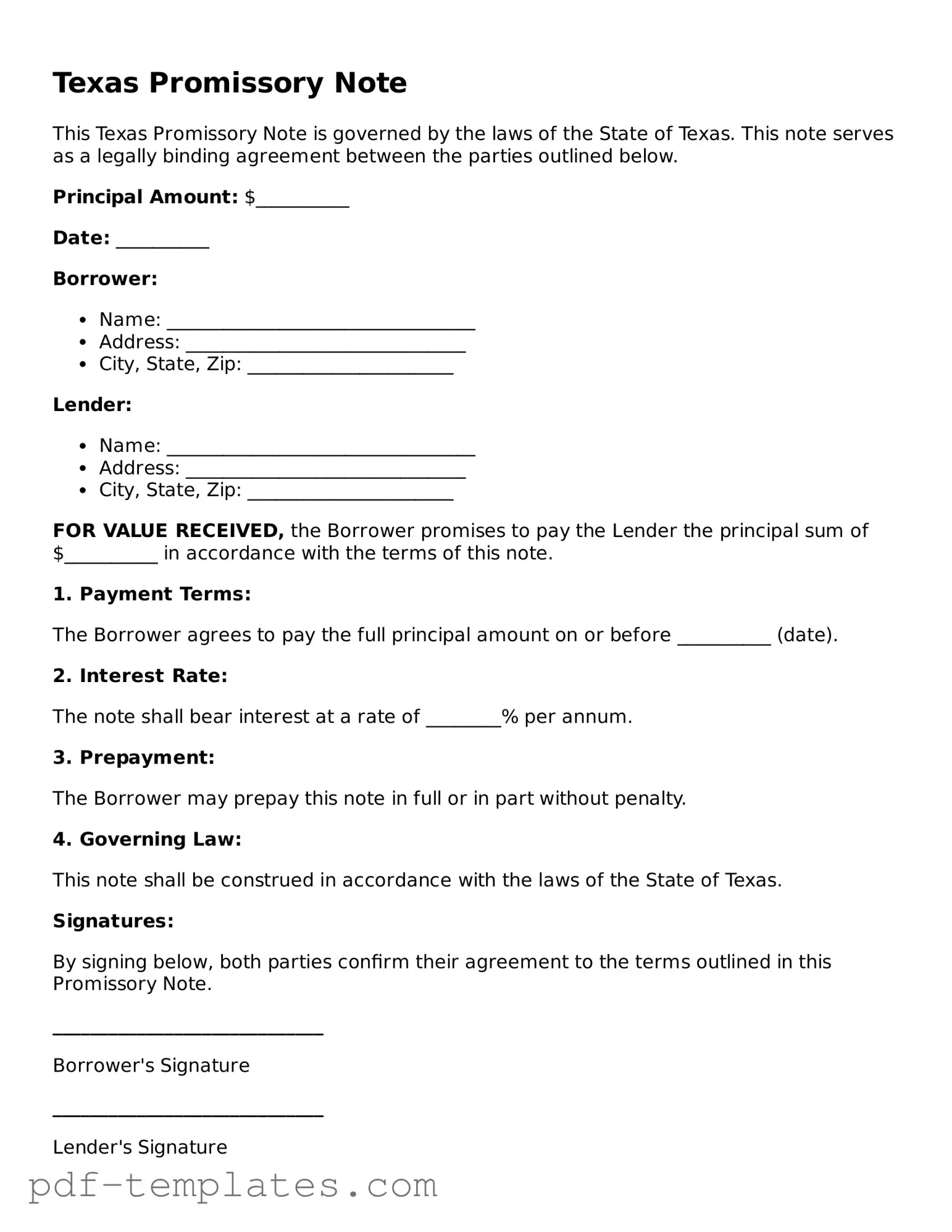A loan agreement is a formal document that outlines the terms and conditions of a loan between a borrower and a lender. Like a Texas Promissory Note, it specifies the amount borrowed, the interest rate, repayment schedule, and consequences of default. However, a loan agreement can be more detailed, often including clauses that address collateral, warranties, and the rights of both parties, making it a comprehensive contract beyond just the promise to repay.
A mortgage is another document closely related to a promissory note. In a mortgage, the borrower agrees to repay a loan used to purchase property, while the property itself serves as collateral. The promissory note in this case represents the borrower's promise to repay the loan. The mortgage document secures that promise, allowing the lender to take possession of the property if the borrower fails to pay.
A personal guarantee is a document where an individual agrees to be responsible for the debt of a business or another individual. Similar to a promissory note, it signifies a commitment to repay a loan. However, a personal guarantee can extend beyond just the specific loan amount, potentially holding the guarantor liable for the entire debt if the primary borrower defaults.
An installment agreement is a payment plan that allows a borrower to pay back a loan in smaller, manageable amounts over time. Like a promissory note, it outlines the total amount owed and the payment schedule. The key difference lies in the flexibility of payments, as installment agreements may allow for adjustments based on the borrower’s financial situation.
A lease agreement, particularly in the context of leasing property or equipment, shares similarities with a promissory note in that it outlines payment obligations. Both documents detail the terms of payment, including the amount and due dates. However, a lease agreement typically includes additional terms related to the use of the property or equipment, such as maintenance responsibilities and duration of the lease.
A credit agreement is a broader document that outlines the terms under which credit is extended to a borrower. Similar to a promissory note, it includes details about the amount of credit, interest rates, and repayment terms. However, a credit agreement often encompasses various forms of credit, such as lines of credit or revolving credit, making it more complex than a simple promise to pay.
A security agreement is a document that grants a lender a security interest in specific assets of the borrower. Like a promissory note, it establishes the borrower’s obligation to repay a loan. However, a security agreement goes further by detailing the collateral that secures the loan, providing the lender with a claim to specific assets if the borrower defaults.
For those navigating the complexities of medical treatment following workplace injuries in California, understanding the necessary documentation is crucial. The All California Forms site provides resources and access to important forms, such as the Request for Authorization for Medical Treatment, which is essential for formalizing requests for medical services as mandated by the Division of Workers’ Compensation system.
A forbearance agreement is a temporary arrangement between a lender and borrower that allows the borrower to pause or reduce payments for a specified time. This document can resemble a promissory note in that it acknowledges the debt and outlines repayment terms. The key difference lies in its focus on providing relief to the borrower during financial hardship, rather than simply detailing the original loan terms.
A deed of trust is similar to a promissory note in that it involves a loan secured by real estate. In this document, the borrower conveys the property title to a trustee, who holds it as collateral for the loan. While the promissory note represents the borrower's promise to repay, the deed of trust provides a legal framework for the lender to reclaim the property if the borrower fails to meet their obligations.
A loan modification agreement is a document that changes the original terms of a loan, often to make repayment more manageable for the borrower. Like a promissory note, it details the obligations of the borrower. However, it focuses on adjusting existing terms, such as interest rates or payment amounts, rather than establishing a new loan or obligation.
